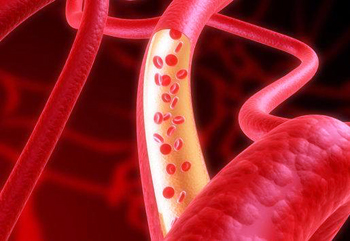 Anemia is a kind of disease with the amount of hemoglobin in the peripheral circulation lower than the normal value. According to its pathogenesis, the disease can be divided into three types: defective blood formation, excessive destruction of red blood cell, and acute or chronic blood loss. Clinically, both acute and chronic blood loss are the common causes of anemia. Chronic hemorrhagic anemia is virtually iron-deficiency anemia. The major symptoms of anemia are sallow or pale complexion, pale finger nails, lips and palpebral conjunctiva, dizziness, tinnitus, palpitation and shortness of breath after xercises,somnolence, lassitude, dry hair, hair loss, dry skin, or puffiness of the face, edema of the lower limbs, flat or fragile finger nails. In the serious case, hemorrhage and fever can be seen.
Anemia is a kind of disease with the amount of hemoglobin in the peripheral circulation lower than the normal value. According to its pathogenesis, the disease can be divided into three types: defective blood formation, excessive destruction of red blood cell, and acute or chronic blood loss. Clinically, both acute and chronic blood loss are the common causes of anemia. Chronic hemorrhagic anemia is virtually iron-deficiency anemia. The major symptoms of anemia are sallow or pale complexion, pale finger nails, lips and palpebral conjunctiva, dizziness, tinnitus, palpitation and shortness of breath after xercises,somnolence, lassitude, dry hair, hair loss, dry skin, or puffiness of the face, edema of the lower limbs, flat or fragile finger nails. In the serious case, hemorrhage and fever can be seen.
Anemia is referred to as "xue xu" (blood deficiency) in traditional Chinese medicine, and iron-deficiency anemia is similar to "wei huang" (sallow complexion) or"huang pang bing" (general edema with sallow skin).Aplastic anemia is characterized by general deficiency, so it is grouped into the category of "xu lao" (consumptive disease); and since it is often accompanied by hemorrhage, it is associated with "xue zheng" (hemorrhagic syndrome) to some extent. Continue to read Chinese medicine treatment for Anemia.
There are a variety of causes of anemia, such as acute or chronic hemorrhage, intestinal parasitosis, disorders of the spleen and stomach, debility after illness or deficient constitution as well as the effect of some medicines or poisonous substances, which result in consumption of blood, or disorder of the spleen and kidneys leading to insufficient qi and blood, thus blood deficiency ensues.